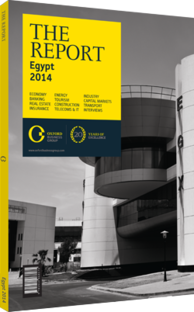State and private insurance could reduce out-of-pocket expenditure
The population of Egypt has tripled in the last 50 years, from 31m in 1964 to around 90m in 2014. This demographic pressure is just one of the challenges faced by a fragmented health care system, which still adheres to a free access approach in some sectors, despite Egypt having one of the MENA region’s highest proportions of out-of-pocket (OOP) payment for private medical treatment.
Reforms to the health care system have been debated at the ministerial level for several years, but as a result of the January 2011 revolution and June 2013’s ouster, changes to political and civil service leadership have slowed progress.
Playing Percentages
According to World Health Organisation (WHO) figures based on government statistics, OOP expenditure accounted for 61% of total health spending in 2011 and 58% in 2012.
However, the US Agency for International Development-sponsored Health Systems 20/20 initiative, which worked closely with Egypt’s Ministry of Finance and the Ministry of Health and Population (MoHP), conducted its own research based on household surveys and published the findings at a conference in June 2011. Its estimate was that 72% of Egyptian households were paying their medical bills OOP, while the government was paying less than 25%.
The health minister at the time, Ashraf Hatem, appeared to accept the findings as a call to action. Health Systems 20/20 quoted him as saying: “The numbers speak for themselves. How can we stand idly while things are getting worse by the day?”
Regional Comparisons
Even going by the lower figures recorded by the WHO, Egyptians face a significantly higher burden of health care costs than their counterparts both in the MENA region and in the WHO’s wider Eastern Mediterranean region, where OOP payments account for an average of 34% and 41% of total health expenditure, respectively.
Egypt had the third-highest proportion of OOP expenditure in the MENA region, behind only Yemen and Iran, in 2012, and the sixth-highest rate in the Eastern Mediterranean region.
Insurance
The level of OOP payment also suggests that many of the Egyptians who may be covered under government schemes opt instead for private treatment where they can afford to. According to the government’s State Information Service’s (SIS’s) own estimates, 50% of the population – mainly public servants and students – is covered by government health insurance, 30% has private health cover and 20% has no health insurance at all.
The Health Insurance Organisation (HIO), which was established in 1964, provides coverage to 45% of the population, operates 38 infirmaries and offers services to 640 other hospitals. However, it has been working on plans to cease provision and concentrate solely on its social insurance role. From 2009 to 2012, the Health Systems 20/20 project advised and trained HIO staff on medical and financial management systems to help them effectively manage the country’s social health insurance scheme. Under the new system, which could come into force in 2016 and cover 70% of Egyptians, the HIO would be the budget holder and the MoHP the state provider.
Private Care
However, the state clearly sees a growing role for private investment, with the SIS suggesting private hospitals, health tourism, elective procedures, pharmaceuticals, continuing education and software platforms as core areas for investment. Insurance providers see medical cover as a key target growth area, and have been lobbying the Egyptian Financial Supervisory Authority (EFSA) to allow companies purely specialising in medical insurance to operate in the country.
“Egypt has one of the region’s highest OOP medical payment records, and the market for health insurance is growing,” Mohamed Maait, the deputy chairman of EFSA, told OBG. “Health premiums are rising faster than any other type of cover, with annual growth of around 25%, compared to 15% overall.”
You have reached the limit of premium articles you can view for free.
Choose from the options below to purchase print or digital editions of our Reports. You can also purchase a website subscription giving you unlimited access to all of our Reports online for 12 months.
If you have already purchased this Report or have a website subscription, please login to continue.

